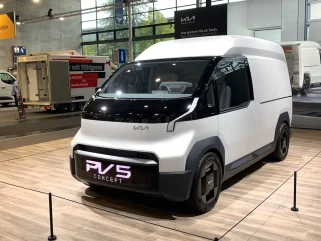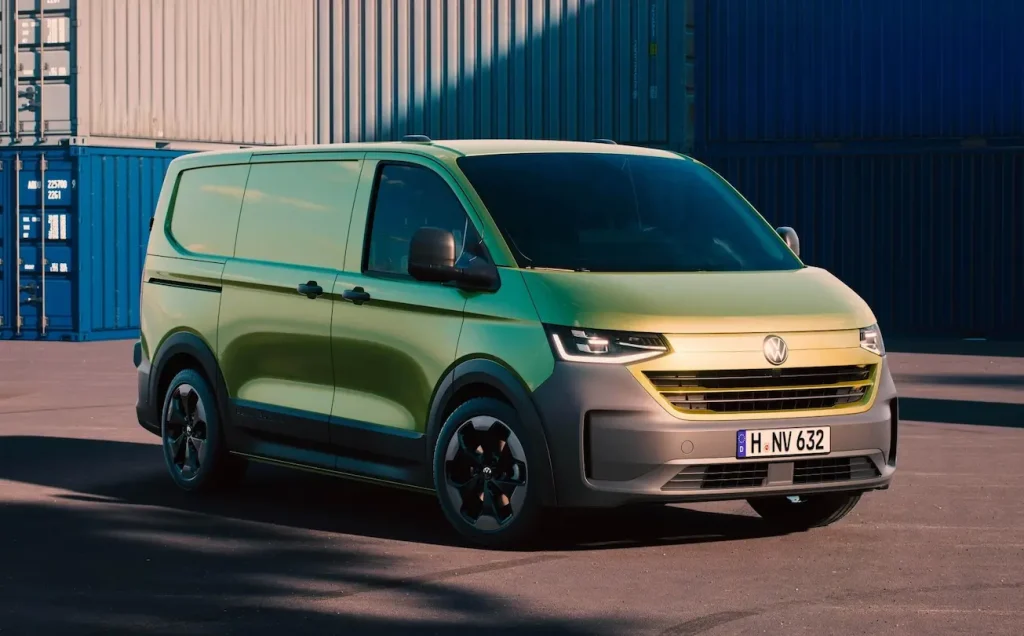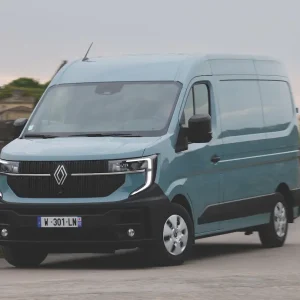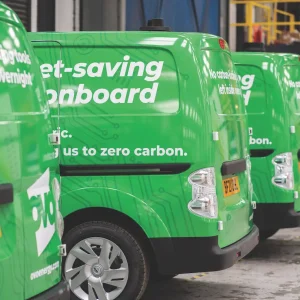
Kia’s entry into the LCV market with this versatile, modular van is set to be one of the major events in the industry in 2025 and could signal the shape of things to come for electric load carriers.
Kia gave European debuts to concept versions of its PV5 compact to medium-sized van and PV7 medium van at the IAA in Hanover in September last year.
The PV5 will be first to market when it arrives in showrooms in November. The brand describes it as being 30% larger than a Volkswagen Caddy, with load volumes spanning from 4.2m3 to 5.1m3. Kia says the PV5 will be available as a panel van, chassis cab and people carrier.
While researching the market in preparation for entering the electric LCV market, Kia says it found customers’ priorities are to have sufficient load space for their needs as well as the ability to access inner city low-emission zones without facing charges.
“They have to access everywhere,” said Pierre-Martin Bos, PBV (Platform Beyond Vehicles) director for Kia Europe.
Built on an electric skateboard platform, all PBV models have what’s called a “dynamic hybrid” modular body, that Kia says reduces the amount of parts needed by 55%. It combines tubular steel and engineered polymers with no loss of strength. There will also be a high level of recycled content in the range, with materials like recycled sea plastics from The Ocean Cleanup project being reused in the vans.
Bos claimed Kia’s research indicated that customer demand is strongest for vans below 3.5-tonnes.
“We must balance payload and range [and] want to be the best in class up to 3.5-tonnes,” Bos said.
Kia stresses it is aiming to compete with both BEV and diesel van manufacturers when it enters the LCV sector.
The PV5 will be built at a new production facility in Korea with plans to make 150,000 units by 2026. The PV5 will go on sale at an ambitious target price of €35,000 (£30,000) for entry-level models, which it claims will be close to diesel competitors.
Kia is working towards recruiting a network of up to 60 specialist PBV outlets in the UK.
Marc Hedrich, CEO of Kia Europe, claimed the brand’s decision to enter the electric LCV market was taken several years ago and was based on the growth of e-commerce, the explosion in last mile deliveries and the emergence of inner-city low emission zones.
Hedrich added clarity on legislation covering the adoption of zero-emission vehicles plus incentives, such as grants, were important to convince customers to switch from ICE to electric vans.
“We’re embarking on a long journey, it will take at least 10 years,” Hedrich said of Kia’s strategy in entering the LCV sector.
Kia has partnered with Geotab to supply fleet management tools and has enlisted several conversion partners, such as Petit Forestier to supply refrigerated vans, Scattaloni for bodies such as tippers and dropsides and Bott and Sortimo for internal storage systems.
Kia’s vans will be backed by a seven-year, 150,000km (93,000 mile) warranty.

Highly Commended: Volkswagen Transporter
The arrival of a new Volkswagen Transporter is always a big deal and order books for the seventh generation of the legendary van are now open. The model is initially available as a panel van, with other variants including Kombi, Shuttle and double-cab due to follow later this year. It is available with standard or long wheelbase, and a choice of Commerce, Commerce Plus and Commerce Pro trim levels.
Diesel and electric powertrains are on offer, with a plug-in hybrid version also due to join the line-up next year. Prices for the new Transporter, excluding VAT, start at £30,995 for a diesel van and £41,965 for an EV. The first deliveries are expected in April.





